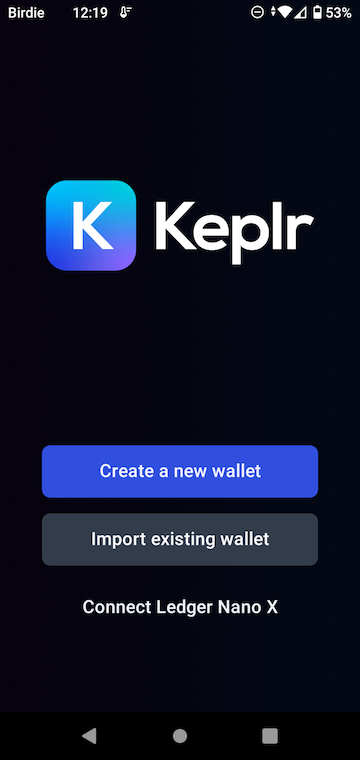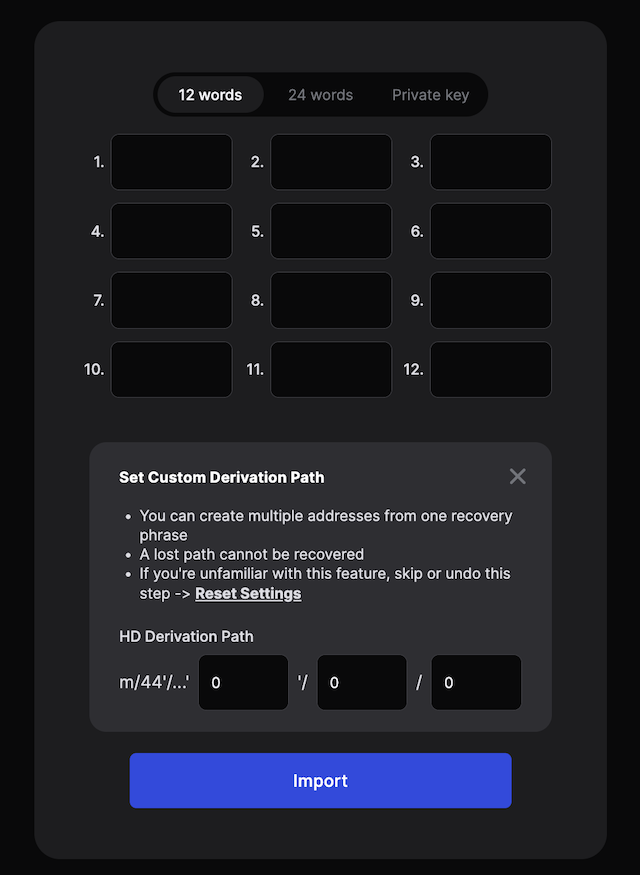Twinkle, twinkle, shiny and bright, just like your body. Even hidden among many solitary stars, I can still find you
‘Kepler’ by Stefanie Sun
The Cosmos blockchain ecosystem has been themed around the universe since its inception. Naturally, many products within the system carry forward this concept, such as the original ATOM token, validator and blockchain browser provider Cosmostation, registration service Starname, NFT marketplace Stargaze, and the recent Neutron smart contract chain, and so on.
In comparison to Ethereum’s most commonly used wallet Metamask, which is also known as the ‘Little Fox’, the most popular wallet in the Cosmos ecosystem is Keplr. At first glance, this word may seem a bit unfamiliar, but when you add a vowel to make it Kepler, you might recognize it as the title of a song and album by Stefanie Sun from 2014. Johannes Kepler was a famous German astronomer and mathematician from the 16th century, whose theories inspired Newton’s discovery of gravity.
Keplr 2.0
The Keplr team is from South Korea, with founder Josh Lee also being a co-founder of Osmosis, the main DEX in the Cosmos ecosystem. I first met Josh and another Osmosis co-founder Sunny Aggarwal at HackATOM Seoul in 2019. Also present were Forbole co-founders Kwun and Terence, and both of our projects won awards at HackATOM. I have a vivid memory of the night when we submitted projects and had award ceremony. It was July 21st, when Yuen Long attack happened in Hong Kong, and I was staying up all night after the 48-hour hackathon, watching the news.

Keplr’s Chrome browser plugin recently released its ‘2.0’ version, significantly improving the interface for onboarding new users, presenting multi-chain and multi-token, staking and governance. However, like many technical-minded teams, Keplr, after years of development, still maintains a very small version number, 0.12.14; in the traditional geek’s mind, 1.0 is only launched when the product has been perfected.
No one would dispute that a good product should be user-friendly for newcomers, but I believe that advanced features and customizations should also be provided for experienced users. Keplr has done its homework in this respect. In terms of functionality and interface, I think Keplr is much superior to Metamask. Of course, the two cater to entirely different ecosystems and cannot replace each other.
2-minute Onboarding
Creating a wallet with Keplr is as easy as pie now. Unless you don’t have a smartphone, a Google account, and internet connection, you are guaranteed to get it done within two minutes:
- Download the Keplr wallet from the App Store or Google Play and open it
- Choose ‘Create a new wallet’
- Choose ‘Sign in with Google’ (iPhone users will see the option ‘Sign in with Apple’, but it’s recommended to use Google for future access on a computer or Android device)
- Name this account for your own reference, and then set a password
- Done




If you are one of the readers who purchased my NFT book Moneyverse or paid for subscription of my newsletter but have been delaying setting up a wallet, I have one good news and one bad news for you: the good news is that it’s now super easy to create a wallet. The bad news is that you have no more excuses to procrastinate. 🥲
Even if you are an expert, I would recommend you to create a new wallet to run through the new onboarding process, to feel the experience of newcomers in the new era.
Multiple identities with multiple seed phrases
For advanced users, Keplr’s multiple identity management feature is very flexible, and the most important feature, which I wish Metamask also provided, is the ability to use multiple mnemonic phrases at the same time.
If you first encountered blockchain in the past five years, you almost certainly used the notoriously cumbersome mnemonic phrase to open a wallet. However, compared to the early stages of blockchain development, mnemonic phrases, equivalent to treasure maps, have significantly simplified wallet management, and various details are also well considered. Once you understand their logic, you might, like me, appreciate the beauty of mnemonic phrase design.
Just like bank accounts, the more you use them, the more often you will need more than one wallet to store cryptocurrencies and NFTs for different purposes or identities. This need can be divided into two types. The first case is when assets belong to another identity, such as organizational assets, which need to be stored separately from personal assets.
In this case, the more suitable approach is to use a newly generated mnemonic phrase to establish a new wallet for the organization. Otherwise, when you need to transfer the wallet one day, or manage the organization’s wallet with others, because you cannot reveal your mnemonic phrase, you can only transfer all assets belonging to the organization from your personal wallet to the new one, which is very troublesome. Moreover, some assets, like staked coins and soul-bound tokens, are untransferable. With Keplr, you just need to select ‘Add Wallet’ (in the app version, click the plus sign in the upper right corner of the wallet list) to add a new mnemonic phrase and generate a new wallet, completely independent of the original one. If you have multiple Google accounts, you can also use the same method to add wallets managed by different Google accounts.
Multiple identities with multiple derivation path
Another situation is when the assets also belong to you, but due to considerations such as usage, they need to be split into different ‘accounts’ for dedicated purposes. As long as you have a rudimentary understanding of accounting, you can fully grasp this concept. In this case, you just need to use the same mnemonic phrase to generate multiple wallets, which Metamask and most wallet applications can also do. Continuing the analogy of the mnemonic phrase as a treasure map, this is like providing a set of values corresponding to the X-Y-Z dimensions after giving precise coordinates, telling the system the exact location of the treasure. This set of values is the derivation path.
In fact, every wallet managed by a mnemonic phrase is always based on a derivation path. However, general wallet software hides these details, as the blockchain is already difficult to use.
For example, the default derivation path for Ethereum wallets is m/44'/60'/0'/0/0, while Cosmos Hub uses m/44'/118'/0'/0/0 by default. Here, 44 represents BIP44, which is the 44th Bitcoin Improvement Proposal. 60 and 118 represent the coin types for Ethereum and Cosmos Hub, respectively. The last three digits, account, change, and account_index, can be customized by users to derive multiple wallet addresses from the same mnemonic phrase. If you’ve ever tried adding a wallet address in Metamask through ‘Add account’, its operation is to use the original mnemonic phrase, increase the account_index by 1 to change the derivation path, and generate a different wallet address. However, it neither provides a choice nor tells users the details.
Keplr, on the other hand, allows advanced users to set the derivation path freely to generate different wallets. Also in ‘Add Wallet’, select ‘Recovery Phrase’ and then ‘Advanced’, and you can customize the derivation path. The advantage of generating multiple wallet addresses in this way is that you only need to remember one set of mnemonic phrases to generate multiple wallets, but others cannot know that these wallets come from the same set of mnemonic phrases and are managed by the same person, protecting privacy. Of course, if you transfer assets between these wallets, it will leave some ‘blockchain footprints’.

In addition to using different mnemonic phrases and derivation paths, advanced users can also use Keplr in combination with a hardware wallet, and use the above-mentioned method of changing derivation paths to create multiple wallets. As the private keys are stored in a hardware wallet that is offline most of the time, this is the most ideal usage method with the highest security level. At the moment, Keplr only supports one type of hardware wallet, Ledger, but reportedly it will also support Keystone in the short term.
Lastly, there is an option to import wallets using a private key directly, but this method is not recommended unless there are no other options, as it is inconvenient and insecure.
To be continued
“Kepler” is the twelfth studio album by Stefanie Sun, who became a sensation after her debut in 2000. In just three years, by 2003, she released her sixth album “To Be Continued” and sold an unimaginable one million copies at the time. That same year, after releasing her seventh album “The Moment”, Stefanie Sun announced a one-year break. Afterwards, she set up her own agency and production company “Make Music” and reached new heights.
Here, I will borrow Stefanie Sun’s unique voice and say goodbye with her song “To Be Continued”. No, I’m not in a position to take a year off. I still have my work to do. It’s just that the article is just too long and needs to be split into two parts. When I return next week, I will introduce Keplr’s multi-chain, multi-currency management, as well as its staking and on-chain governance functions.
Life feels good, living in the world Incompletion is an anticipation, never to be finished
‘To Be Continued‘ by Stefanie Sun


Leave a Reply